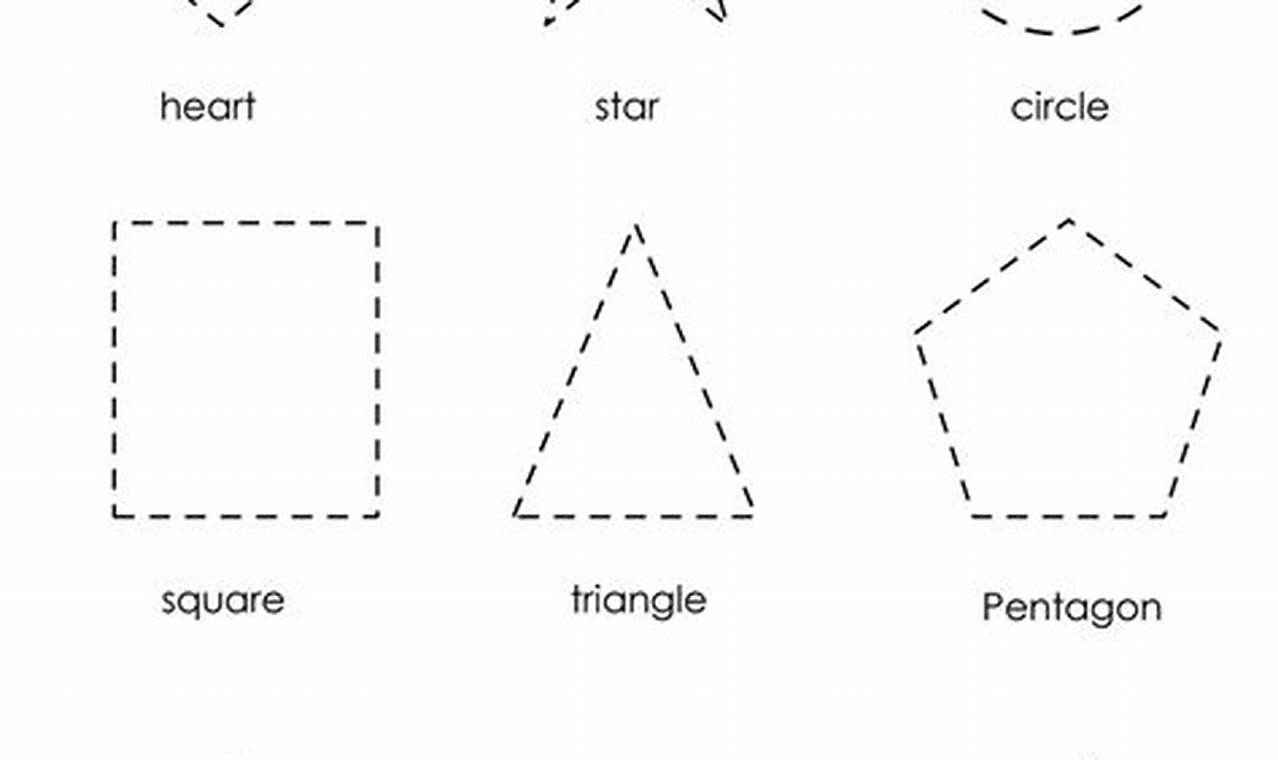Shape tracing with directional arrows is a foundational activity that supports early childhood development. This exercise is crucial in preparing young learners for writing and drawing by developing the necessary fine motor skills and hand-eye coordination. Mastery of tracing shapes is a stepping stone towards forming letters, numbers, and eventually, coherent handwriting, fostering a lifelong love for learning and creativity.
The key learning benefits of shape tracing worksheets extend beyond simple line drawing. Regular practice enhances essential skills such as visual-spatial reasoning, which is the ability to understand and interpret spatial relationships. It also strengthens hand control and precision, enabling children to make controlled movements with their hands. Furthermore, following directional arrows improves focus and concentration, teaching children to follow instructions and complete tasks systematically.
The “shape tracing with directional arrows” worksheet typically contains a variety of basic shapes, including circles, squares, triangles, and rectangles. Each shape features clear, bold outlines and directional arrows indicating the correct tracing path. Fun illustrations often accompany the shapes to maintain engagement. Adequate space is provided for repeated practice, allowing children to solidify their understanding and improve their motor skills through repetition.
To use the worksheet effectively, begin by explaining the purpose of directional arrows: to guide the pencil along the correct path. Encourage children to trace slowly and carefully, staying within the lines of the shapes. Adults can offer gentle guidance, demonstrating the correct hand movements and praising effort and improvement. Thick pencils or crayons may be easier for young children to grip. Break down the task into smaller sections, focusing on one or two shapes at a time to prevent overwhelm and maintain concentration.
For further learning and skill development, consider complementary resources such as related shape-recognition worksheets, number tracing exercises, and alphabet writing practice. Educational games that involve shape sorting and pattern recognition can also reinforce the concepts learned. Daily activities like drawing shapes in the sand or identifying shapes in the environment can provide additional hands-on practice. Kidtraces.com offers a variety of free printable worksheets to support continuous learning.
In conclusion, shape tracing with directional arrows provides a valuable opportunity for children to develop essential pre-writing skills in a fun and engaging way. By enhancing fine motor skills, hand-eye coordination, and focus, this activity lays a solid foundation for future academic success. Readers are encouraged to download and try the worksheet to experience these benefits firsthand. Explore more free worksheets on Kidtraces.com to support continuous learning and skill development across various subjects.
